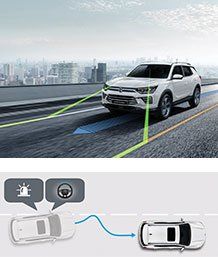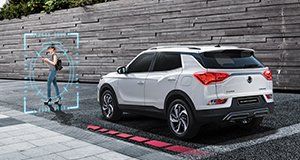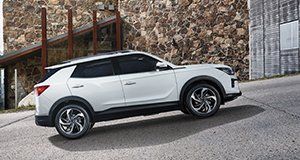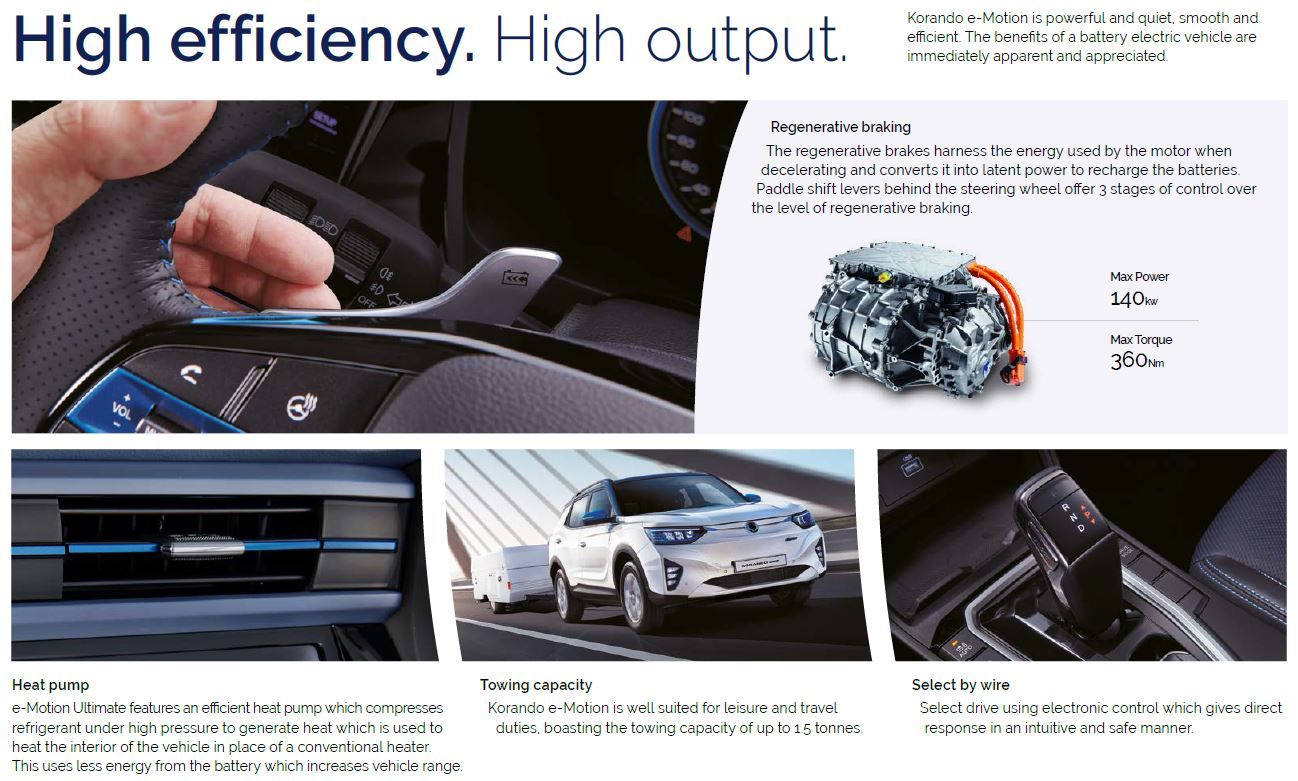Korando e-Motion
KORANDO E-MOTION
Electrifying good looks
It’s all-electric. It’s Korando e-Motion. All the practicality of an SUV, with all the sustainability of the electric vehicle you’ve been waiting for.
It’s the ultimate marriage of sophisticated Korean DNA with the latest in vehicle technologies.
now
£30,995*
Future-Forward design
Great design comes from any angle, the rear looks as elegant as it is functional.
Clearly a SsangYong with the dragon’s wing badge, clearly a Korando with a wide opening tailgate and substantial loadspace to cater for the families needs, clearly electric signed off with an e-Motion logo.
MAKE A BOLD ENTRANCE
This is an all-electric vehicle with refined, energetic style. Bold, sleek and chic.
Combining heritage and hi-tech in one refined advanced package, Korando e-Motion
reduces emissions without sacrificing any style.
POWER AT YOUR FINGERTIPS
Korando provides a convenient charging control system via the infotainment screen allowing pre-scheduled charging, target charging and providing a clear charging status display to keep you on track

TECHNOLOGY
Forward Collision Warning (FCW)
Alerts the driver when another vehicle or pedestrian appears in the path of the vehicle.
Autonomous Emergency Braking System (AEBS)
On detecting a pedestrian or another vehicle within the intended path, AEBS will automatically deactivate the throttle and will apply the brakes to reduce the risk of a serious collision.
Lane Departure Warning System (LDWS)
Warns the driver whenever the vehicle begins to move out of its lane unless the directional indicators are on in that direction.
Lane Keeping Assist System (LKAS)
LKAS uses a front camera to monitor the painted lane markers. On detecting an attempt to change lanes without prior signaling, it automatically corrects the electrical power steering system to keep the vehicle within the intended lane.
Safety Distance Alert (SDA)
By continuously monitoring speed and distance, SDA will sound a warning whenever a safe braking distance is not maintained from the car ahead.
Front Vehicle Start Alert (FVSA)
While stopped and the car in front has started to move, FVSA will issue a visual pop-up alert and audible alarm
Electronic Stability Program (ESP)
ESP employs a combination of throttle intervention and braking of individual wheels to
help maintain directional stability over all types of road surfaces and in adverse weather conditions.
Anti-Rollover Protection (ARP)
ARP adjusts the amount of engine output and braking power delivered to each individual wheel while driving around sharp turns at high speeds to prevent the vehicle from rolling over.
Brake Assist System (BAS)
On detecting a panic braking situation, BAS boosts braking pressure to its maximum thus reducing the braking distance and the risk of a serious accident.
Hill Descent Control (HDC)
On extremely steep hills, activating the HDC function will automatically shift the vehicle into low gear and begin pumping the brakes to maintain a safe and slow descent.

Technology is a strong feature with a ‘blaze cockpit’ on top models which comprises a 12” full colour LCD programmable instrument cluster linked to a 9” centre screen which includes heating and air-conditioning controls and an infotainment system with Apple CarPlay/Android Auto and TomTom navigation all topped off with infinitely variable colour mood lighting.


















































